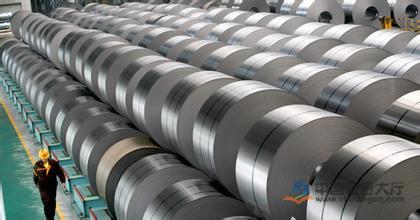According to Chinese Ambassador to South Africa Tian Xuejun, China and South Africa can find an appropriate solution through friendly dialogue and consultation to resolve trade disputes over steel import.

"We have noticed that recently the International Trade Administration Commission of South Africa has waged trade protection measures investigation on steel import," Tian said in an interview with the Independent Media on the production capacity of the global steel industry.
The interview was published on Thursday by newspapers of the Independent Media such as Star, Pretoria News, Cape Times and The Mercury.
"There is a sound mechanism between China and South Africa in trade disputes settlement," he said.
The steel industry, he said, plays an important role in South Africa's reindustrialization.
"The production and business of a large batch of downstream industries including auto manufacturing could also be influenced by steel price. Therefore South African government is cautious in taking trade protectionist measures," said the ambassador.
Responding to calls by South African steel producers for the government to take measures to protect this industry, Tian said, "The South African steel industry enjoys a solid basis, while China's steel producers are strong in technology and funding, both sides can take full advantage of our strengths in joint development of African market."
He said Africa is going through industrialization and integration, which will generate huge demand for steel, and in the meantime, the FOCAC Johannesburg Summit held last December gives new impetus to the cooperation on production capacity and development of infrastructure facilities between China and Africa, which will further create and unleash new potentials of African steel market.
The ambassador said some countries accuse China of dumping steel because they use the price of steel in a "surrogate country" to pursue anti-dumping claims.
"The price will be certainly in their favor, but cannot reflect the real cost of China's steel products at all," he said.
According to WTO's Protocol on the Accession of China, other members in WTO have the obligation to stop the practice of using a "surrogate country" in anti-dumping investigations by December of this year.
The ambassador said China's competitiveness in the global steel market comes from our plants' competitive strengths in labor cost, scale, technology, and supply chains.
Taking labor cost as an example, in the U.S., a steel worker's annual income amounts to 60,000 dollars, while in China it is only 20,000 dollars. Weak commodity prices also pushes the cost of China's steel further down, but steel producers in some countries cannot benefit from the price slump of commodities since they use scrap steel as raw materials.
The ambassador refuted allegations that the Chinese government subsidized its steel companies to give them an unfair trade advantage.
"As a member of WTO, China always abides by world trade rules. Not only has it never subsidized steel export, it has even imposed tariffs on the exports of certain kinds of steel products, an action never taken by other steel producing countries," the ambassador said.
He said that as a member of WTO, China always abides by world trade rules.
"Not only has it never subsidized steel export, it has even imposed tariffs on the exports of certain kinds of steel products, an action never taken by other steel producing countries," he said.
The ambassador also introduced the measures taken by both the Chinese government and enterprises to ease the global steel overcapacity.
"China is pushing vigorously for the supply-side structural reform. One of the major tasks is to digest our own steel overcapacity. Over the past 3 years, China has eliminated more than 900 million tons of backward steel capacity, another 100-150 million tons of steel capacity will be phased out in the next 5 years," he said.
The overcapacity in the steel industry is a global issue, not only faced by China, but also by Europe, U.S. and other major economies as well.
China is a major steel producer, but also is a major steel consumer at the same time. Around 90 percent of the steel it produces is for its own development.